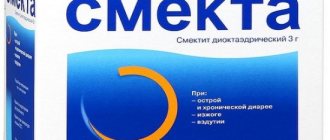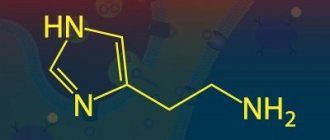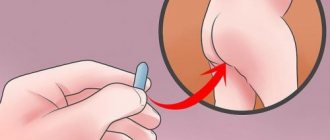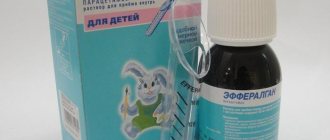When a child's health deteriorates, parents are very worried. Symptoms such as vomiting and fever may indicate various diseases. To find out what caused the development of these symptoms, parents should go to the hospital. Most parents, after symptoms of vomiting occur in their baby, tend to resort to the use of a drug such as Smecta. But let’s find out in more detail whether a child can be given Smecta, and for what indications it is recommended to use it.
What does the medicine contain?
Smecta is a medicinal product that belongs to the group of sorbents. The drug is considered safe, as it is based exclusively on natural ingredients. The drug is used primarily for the treatment of gastrointestinal diseases, in particular with the development of symptoms of chronic and acute diarrhea.
Smecta is produced in a single form - it is a powder, which is intended for preparing a suspension. This suspension is intended for oral use. The powder has a white-gray and gray-yellow color, which is packaged in sealed bags of 3.76 grams. The bags are placed in cardboard packages of 10 and 30 pieces, respectively. The sachets are sold both individually and in packs, which allows you to always have the medicine in your home medicine cabinet.
It is important to know! Using the powder in dry form without preparing a suspension is strictly contraindicated.
Smecta powder contains an active ingredient called dioctahedral smectite, which is contained in an amount of 3 grams per sachet. It is this active substance that has a positive effect on the functioning of the gastrointestinal tract. In addition to the main active ingredient, the drug also includes the following auxiliary components:
- Dextrose monohydrate;
- Various flavors: orange and vanilla;
- Sodium saccharinate.
Flavorings are used to give the powder a pleasant smell and taste. All other auxiliary components serve to improve the homogeneity of the drug, as well as improve the therapeutic properties of the drug.
How does Smecta affect the body?
The principle of action of the drug Smecta is similar to activated carbon. The only difference is such an important property as mitigating the effect on the gastric mucosa.
After dissolving the powder and ingesting the suspension, the active ingredient enters the digestive tract. The active substance on which the product is based creates a kind of protective film in the digestive tract that prevents the absorption of toxins and bacteria by the walls of the intestines and stomach.
It is important to know! The safety of Smecta is due to the fact that the active substance is not absorbed by the blood, but acts exclusively in the digestive tract.
General information about the drug
The main advantage of Smecta is the complete absence of any effect on the functioning of the digestive tract. The drug itself is excreted from the body unchanged (along with feces). That is, even if you take it in the absence of any signs of poisoning or gastrointestinal upset, nothing bad will come of it.
At the same time, Smecta acts on glycoprotein mediators responsible for the production of mucus. And at the same time, the main component of the drug forms polyvalent compounds with toxins, thus removing them from the gastrointestinal tract and preventing their absorption through the walls of the stomach or intestines. That is, the drug is effective directly against poisoning, including infectious etiology . But it can also be used to treat chronic diarrhea.
Is it possible to give Smecta to a small child when vomiting? You can take the drug at any age, from birth, since the drug has no effect on the biochemical composition of the blood. With its help, you can normalize the intestinal microflora and reduce the concentration of toxins in the digestive tract.
Main indications for the use of Smecta
It is important to note for which diseases you should resort to using Smecta. The drug is used for the development of the following diseases:
- food poisoning;
- diarrhea and intestinal disorders that arise for various reasons;
- for symptoms of food allergies;
- flatulence, bloating, and heaviness in the stomach;
- with dysbacteriosis, the causes of which are due to the consumption of stale or spoiled food.
The drug Smecta is safe and highly effective for the indications described above. For symptoms of intestinal infection, Smecta can not only eliminate the symptoms of nausea and vomiting, but also reduce the likelihood of diarrhea. Reducing intoxication by enveloping the walls of the stomach and intestines helps stop the symptoms of vomiting.

It is important to note the fact that Smecta does not have a negative effect on the normal intestinal microflora, so after its use there is no need to take drugs to restore the microflora. The causes of diarrhea in children of different ages can be very unpredictable. Children constantly put various objects and toys into their mouths, on which pathogenic microorganisms settle, causing poisoning and disruption of the gastrointestinal tract.
It is important to know! It is almost impossible to prevent the causes of diarrhea in a child, so parents are advised to always keep a bag of Smecta in their medicine cabinet.
Causes of vomiting in children
The most common cause of vomiting in young children is not banal food poisoning, as happens in adults, but an intestinal infection.
Any parent very strictly monitors the baby’s diet and will never allow the child to eat anything stale or poisonous.
But intestinal infections are a real scourge of small children, because the baby puts into his mouth all surrounding objects that may contain pathogenic bacteria.
Vomiting is not an independent disease, but only a symptom of a more dangerous condition: from chemical poisoning to a concussion.
Vomiting can be caused by:
- food poisoning and indigestion;
- binge eating;
- taking a drug or chemical intoxication;
- individual intolerance to any product - most often it is whole milk, glucose or cereals;
- congenital pathology associated with the nervous system;
- intestinal obstruction, which can occur in children under one year of age and older and is a life-threatening condition requiring immediate surgical intervention;
- spasms of the esophagus or its blockage by a foreign body, which often happens to children under three years of age who have swallowed an object;
- acute inflammation of any part of the digestive system, including the cecum (in this case, the doctor diagnoses acute appendicitis);
- spasms of the esophagus caused by impaired motor function;
- acute mental states: overexcitement, fear, anxiety - which often happens to children under 3 years of age;
- a one-time reaction to a new complementary food.
Does Smecta help with vomiting? It should be noted right away that Smecta will not help stop vomiting in most of these conditions.
READ Why can you feel sick during pregnancy?
Its area of action is intestinal infections, indigestion and food poisoning. If a small child begins to vomit, then parents should monitor his well-being every minute and hold him in his arms in an upright position so that he does not choke on the vomit.
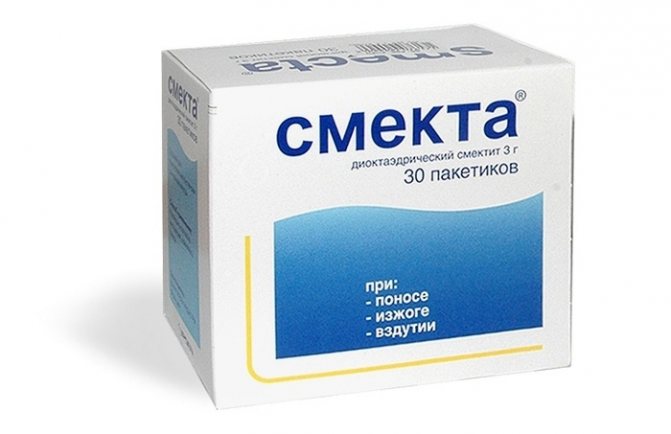
A single vomiting, which is not accompanied by symptoms such as fever, diarrhea, nausea and continuous crying of the child, indicating acute pain in the tummy, is most likely a common reaction to excessively fatty foods or overeating.
There is no need to call a doctor; it is enough to give the child Smecta, and his health will return to normal, since this drug will promote digestion.
If the child’s condition is alarming, because the symptoms are not limited to vomiting, then you must call an ambulance.
Features of using Smecta
Smecta powder contains instructions for use, which describe the procedure for preparing the suspension. Parents must read the instructions before using the drug. The daily dosage of the drug should correspond to the recommended amount of medication. Let's consider the effectiveness of Smecta for symptoms of diarrhea and vomiting.
Effective against diarrhea
Thanks to its composition, Smecta takes an active part in the process of destroying viruses and pathogenic microorganisms in the intestines. The main advantages of this remedy include a reduction in the manifestation of allergies, as well as an improvement in the metabolic process and a positive effect on the immune system.
How to take Smecta
Instructions for use of Smecta for children under 6 years of age with fever and vomiting indicate that the duration of therapy should not exceed three days.
It is important to know! It is strictly contraindicated for newborns and infants up to one year to exceed the dosage of the drug. This can lead to unforeseen consequences and the development of side symptoms.
For infants, one sachet of Smecta is enough, which must be diluted in half a glass of boiled water. For children under one year old, compote, juice or other liquids can be added to the prepared suspension. It is also possible to dilute the drug with breast milk or artificial formula.
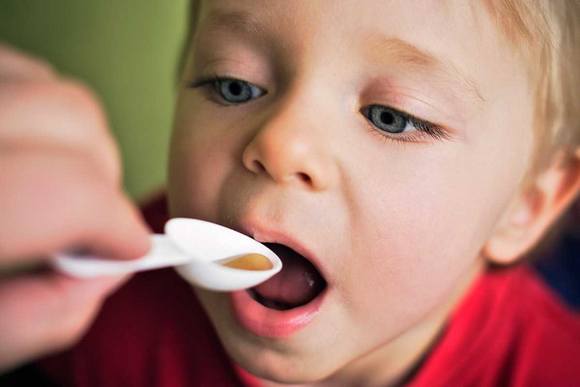
Children over one year old can be given the medicine in the amount of 2 packets per day. Over the age of two years, with diarrhea, a child is allowed to give Smecta in the amount of 3 packets, distributing their intake over equal periods of time.
It is important to know! If your baby experiences a deterioration in health after taking the drug, you should stop using it and consult a doctor.
How to use Smecta
For infants, dilute the contents of one sachet in 50 ml of warm boiled water, mixture, or tea. Children under one year of age should take Smecta in the amount of 2 sachets per day. This dose must be distributed over the course of a day. Young children should be given 1 teaspoon every 10 minutes. Take 2 sachets per day for three days, and then 1 sachet per day.
Children over one year of age are prescribed 4 sachets per day for 3 days. Further treatment is continued at 2 sachets per day until vomiting and diarrhea stop.
If children experience constipation, the dose of the drug should be reduced. For chronic constipation, you should consult your doctor about using another medicine.
When to use Smecta is not recommended
Before you rush to give your child Smecta for diarrhea, diarrhea and other signs of gastrointestinal discomfort, you need to make sure that he does not have the following contraindications:
- fructosemia;
- excessive sensitivity of the baby’s body to the components of the medicine, which happens extremely rarely;
- signs of intestinal obstruction;
- symptoms of chronic diarrhea, since in this case the drug will not have a positive effect;
- intestinal malabsorption.
If a child has at least one of the above contraindications, then using the medicine is prohibited. The attending physician can decide on the possibility of using the drug after examining the child.
Tips for parents
Before resorting to the use of medications for a child, you should make sure that their use is appropriate. To do this, you can call your local doctor and consult or call him at home. Below are tips to help parents avoid harming the health of their babies:
- Nausea is not the main sign of problems with the digestive system, so you should not rush to use Smecta.
- For vomiting and diarrhea, it is imperative to give children a drug such as Regidron. The drug Smecta should be used as an additional effect.
- If your baby shows signs of fever along with symptoms of vomiting and diarrhea, you should definitely go to the hospital. This may indicate serious pathological disorders.
- Smecta can be given only after the powder has completely dissolved. It must be dissolved only in warm water, otherwise it will be impossible to achieve complete dissolution.
- The prepared suspension should be used during the day, otherwise the effectiveness of the drug will be reduced.
- You can give the drug to children under one year old in small portions, but under no circumstances should you force it into them. The cost of Smecta is not so high, so parents should always have several sachets of the drug in their first aid kit. Before use, be sure to make sure that the drug has not expired.
Mechanism of action
Smecta is a natural sorbent, which, once inside the gastrointestinal tract, restores its functioning.
The medicine has a positive effect on all parts of the gastrointestinal tract and can be used to treat diseases of the stomach and intestines.
The active ingredient of Smecta is smectite, a mineral that is a mixture of aluminum and magnesium. In nature, this substance is found in some clays.
Clay is a sorbent known in folk medicine that absorbs a huge amount of substances - soluble and insoluble.
Smecta was developed and produced by the pharmaceutical company Ipsen Pharma. Other companies produce the same drug under different names.
Once in the stomach, Smecta, when children vomit, absorbs the poisons that caused vomiting, bacteria and even some viruses.
Video:
Rotavirus infection is common in children under 2 years of age, the symptoms of which are vomiting and diarrhea.
Smecta is one of the drugs that can be used to treat rotavirosis, as it removes rotaviruses from the intestines.
Surprisingly, while cleansing the intestines of bacteria, viruses and their toxins, the drug does not wash away beneficial minerals from the body.
Smecta actively contacts the intestinal epithelium, increasing the viscosity of the protective layer. This makes the intestines more resistant to toxic substances that irritate its walls.
READ What can you take for nausea?
Once in the intestines, the drug retains good fluidity and envelops the organ like a film, preventing toxins that enter the body with food from being absorbed into the blood.
In addition to the gastrointestinal tract, Smecta affects the circulatory system. It increases blood clotting, so it is useful for intestinal injuries and hemorrhages in the stomach.
No wonder Smecta is prescribed for ulcers. The mineral substance is not absorbed into the blood and is excreted from the intestines in a chemically unchanged form.
Parents traveling with small children know how hard climate change can affect the digestion of babies and even older children.
Almost every baby taken for a summer holiday at the seaside or to the countryside may experience vomiting and diarrhea.
Therefore, when going somewhere with a child for several days, you must have three or four bags of Smecta with you.
Adults can take this drug without waiting for intestinal problems - simply as a preventive measure.
